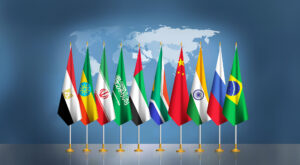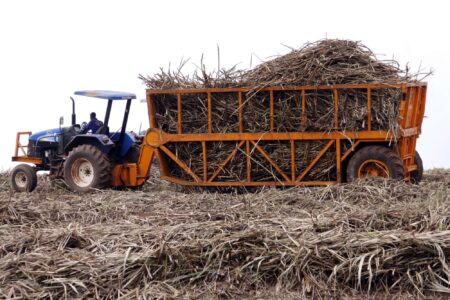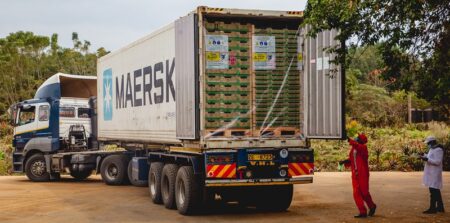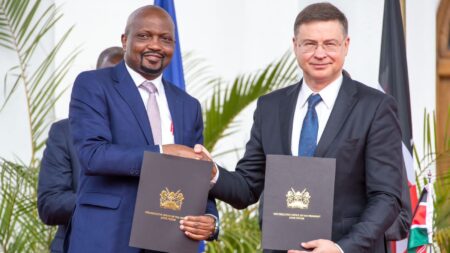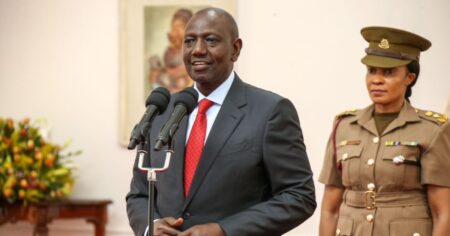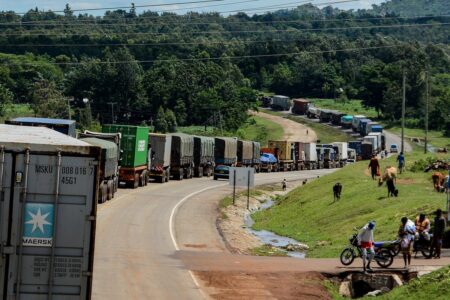- IMF Growth Forecasts: BRICS to Lead the World in the Next 5 Years
- Vantage Capital seals exit from PickAlbatros Hotels after $18.4M pandemic boost
- Madica backs Earthbond in bold pre-seed bet on sustainable solutions
- Venture capital and debt drive growth in Kenya’s agri-tech sector
- Sustainability Week Africa: Pioneering change amidst climate challenges
- Refugee Crisis in Chad as War and Hunger in Sudan Drive Thousands Across Border
- Senegal 2050: A Blueprint for Economic Transformation
- Kenya’s banking sector corporate taxes hit $563.7 million despite industry profit drop
Browsing: COMESA
- This ban is poised to protect domestic farmers and help stabilise the local sugar industry, which has been wobbly due to unchecked imports and poor management of millers.
- Kenya projects local sugar factories could produce over 800,000 metric tonnes in 2024, an uptick from the previous year.
- On average, Kenya consumes about 950,000 metric tonnes of sugar annually.
In a sweet deal fashioned to bolster local sugar producers, Kenya has imposed an immediate freeze on sugar imports from outside regional markets: The Common Market for Eastern and Southern Africa (COMESA) and the East African Community (EAC).
The decision comes at a time when East Africa’s largest economy is projecting a bumper harvest of sugarcane in its sugarbelt across Rift Valley, Nyanza and Western areas. This ban is poised to protect domestic farmers and help stabilize the local sugar industry, which for years has been wobbly due to unchecked imports and …
- The East African region and the Common Market for Eastern and Southern Africa (COMESA) were the single biggest trade blocs that consumed Kenya’s exports.
- According to the Kenya National Bureau of Statistics (KNBS), the value of Kenya’s exports to the EAC totaled $496.7 million (Ksh77.9 billion) up from $431 million (Ksh67.7 billion).
- There was an increase in earnings from exports to Uganda (27.7%), Tanzania (32.1%), South Sudan (64.4%) and the Democratic Republic of Congo (78.6%).
Kenya’s exports to her East African Community (EAC) neighbours increased in the third quarter of 2023, as the country continued to push volumes amid efforts to cut the high import bill.
This comes as Africa increasingly remained Kenya’s biggest export market, even as economies edge closer to operationalizing the African Continental Free Trade Area (AfCFTA).
The East African region and the Common Market for Eastern and Southern Africa (COMESA) were the single biggest trade …
- According to the Agriculture and Food Authority (AFA) there are 15 sugar factories in the country.
- Despite these investments, self-sufficiency in sugar has remained elusive over the years as consumption continues to outstrip supply.
- The deficit is met through imports mainly from COMESA states.
President William Ruto of Kenya has declared war on sugar cartels, who have been blamed for causing a collapse of state-owned factories, as private players flourish in the country.
This, even as imports continue to dominate the market, which has over years struggled with a shortage of the sweetener, owing to a low production capacity by local millers.
Kenya’s sugar industry cartels
After taking power in September 2022, President Ruto promised to revive the sugar industry. Among others, he offered to investing in new and modern milling machines besides providing affordable fertilizer to farmers.
And just last week, he promised to breathe life into Mumias Sugar, …
The East African region has a long history of cooperation stretching back to 1900 when a Single Customs Collection point was established at Mombasa. Still, Non-Tariff Barriers remain a challenge to trade. The first instance of regional integration dates back to 1917 between Uganda and Kenya.…
- Kenya will progressively allow more imports from the EU into its market.
- An EU official terms the trade agreement with Africa’s seventh largest economy “a partnership of equals”.
- Under the Kenya-EU trade deal, Nairobi’s exports to European bloc will be tariff-free from day one.
A new Kenya-EU trade deal will see Nairobi’s exports to the European bloc enjoy tariff-free status from day one, while tariffs on EU exports will be liberalised over time but not on all products. The Kenya and European Union trade deal will provide new opportunities for Kenyan and European businesses, including the micro-, small- and medium-sized enterprises.
The two parties have concluded negotiations on the much awaited Economic Partnership Agreement. A new era of Kenya-EU trade ties will start in post-Brexit world where Brussels is exerting more influence across Africa.
European Commission Executive Vice-President and EU Trade Commissioner Valdis Dombrovskis and Cabinet Secretary of Kenya’s Ministry …
- Kenya’s President William Ruto is urging Africa to shift from exports of raw materials to industrial processing of goods. He says African economies must change tact to revamp import/export trade.
- Comesa bloc has a combined GDP of $805 billion and a global export/import trade in goods worth $324 billion.
- In a radical move, Dr Ruto calls for merging of Comesa, the East African Community, and the Southern African Development Community.
Kenya’s President William Ruto is calling on the Common Market for Eastern and Southern Africa (COMESA) member-state to embrace industrial processing of to boost the value of exports and in turn enhance Africa’s share of global trade.
In a radical shift that is also seeking to boost trade across Africa, Dr Ruto is also calling for the consolidation of trading blocs Comesa, the East African Community, and the Southern African Development Community.
Industrial processing to boost Africa trade
By joining …
- Angola has become Africa Trade Insurance Agency’s (ATI) 21st member state by paying $25 million in capital subscription fees.
- ATI’s gross exposure in Angola currently stands at $467 million.
- The membership was funded the Angolan National Treasury and proceeds from the landmark BITA water project.
Oil-rich Angola has become the 21st African member state joining pan-African insurer, Africa Trade Insurance Agency (ATI) after paying $25 million in subscription fees. The deal will also see Angola become first Lusophone member country in the underwriter.
ATI was established in 2001 by seven Comesa countries and with technical and financial backing of the World Bank. The agency’s core mandate is to provide insurance against political and commercial risks. This is considered necessary in order to attract foreign direct investments across member states.
Luanda’s membership was funded by the Angolan National Treasury resources and proceeds from the landmark BITA water project. BITA …
- The country is considered East Africa’s strongest economy.
- It is among countries facing a huge challenge of illicit trade, estimated to be valued at above USD6.34 billion (Ksh800 billion).
- According to official government data, up to 70% of imported goods are counterfeits.
Kenya has a domestic market of over 50 million people and is among the leading economies in sub-Saharan Africa.
The country is considered East Africa’s strongest economy, with the region having a GDP of about USD163.4 billion (at purchasing power parity, about USD$473 billion), and the average GDP per capita is about USD941 (at purchasing power parity, $2,722).
In addition to the EAC market, investors in the partner States have access to other African markets such as COMESA, SADC and AfCFTA, as well as international markets through preferential trade arrangements.
The Common Market for Eastern and Southern Africa (COMESA) comprises 21 Member States with a population of 560…
Africa is huge continent with untapped potential. With the rest of the world opening up for the best international trade and travel relations, Africa is learning and following the same path, with countries such as Uganda, Kenya and Rwanda easing entry restrictions by issuing visa on arrival and hence turning themselves towards open borders opportunities as members of the East African Community (EAC).
Unrestricted movement of people and goods between African countries holds the key to unlocking this trade potential. That is why trade analysts are touting the African Continent Free Trade Area (AfCTA) as a game changer in inter-Africa trade.
According to United Nations Conference on Trade and Development (UNCTAD), Intra-African trade is currently low at 14.4 percent of total African exports. UNCTAD estimates that the AfCFTA could boost intra-African trade by about 33 percent and cut the continent’s trade deficit by 51 percent.
The possibility of more open
A report published by Lexology on January 18, 2022, Zimbabwe's economy is largely driven by the mining, agriculture, and tourism sectors. However, because of Zimbabwe's foreign currency shortages, there is a significant focus on export-oriented and foreign currency-generating activities.
This allows investors, businesses, and the government to retain value and meet the country's forex needs. Zimbabwe's main exports are minerals, agricultural produce, and soft commodities. She also has large reserves of chromite, coal, gold, and iron ore, among others. The country is also one of the world's largest growers of tobacco.
According to research by Mordor Intelligence, Zimbabwe is a signatory of several bilateral and international agreements (MIGA, OPIC, ICSID, and UNCITRAL) that protect the investments of the companies in Zimbabwe. Zimbabwe has cheap educated, and competitive labour, well-developed infrastructure, and easy access to regional and global markets through its membership in AU, COMESA, SADC, COPAC, and CISSA. Zimbabwe offers…
